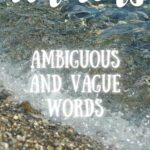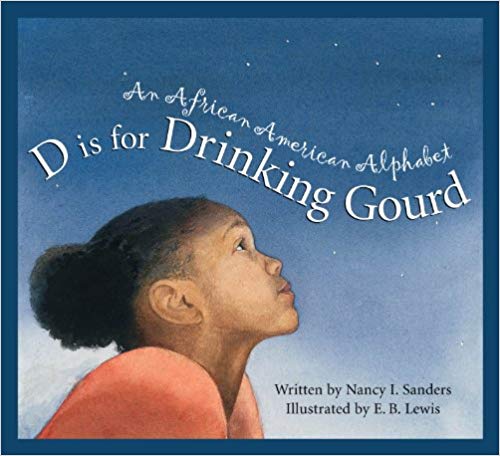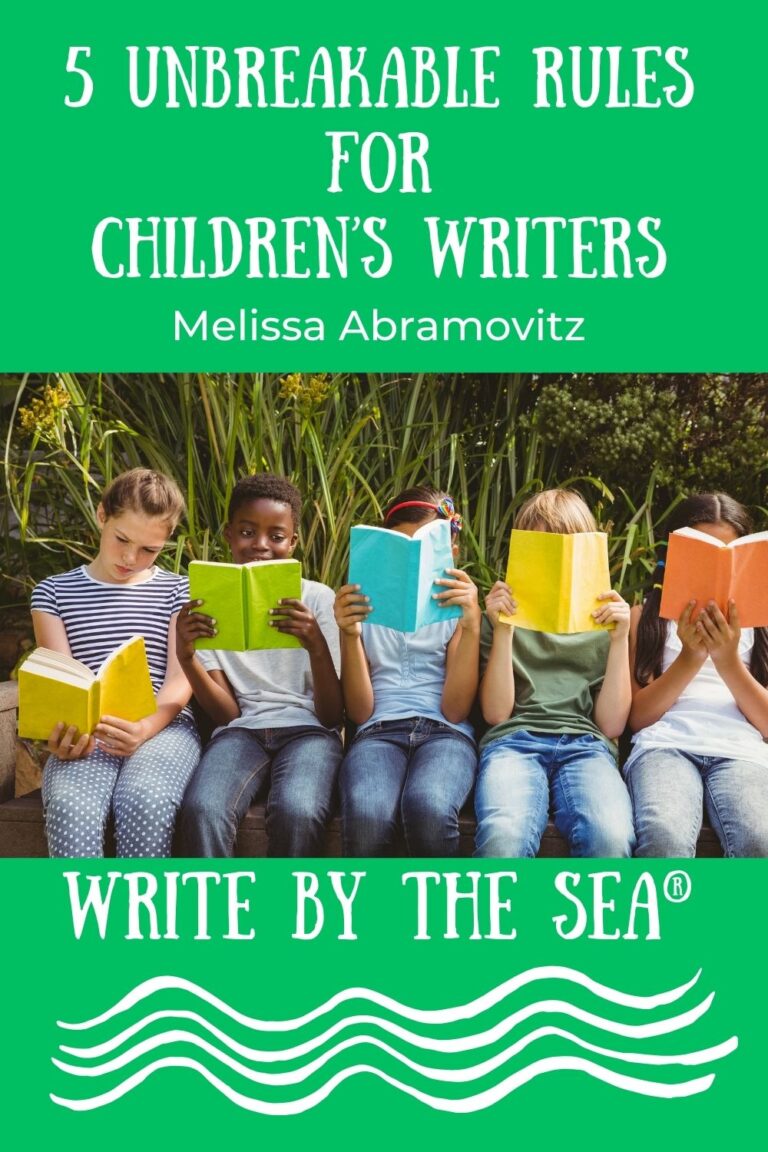Writing instructors constantly emphasize several important rules related to using vivid, specific words rather than vague and ambiguous ones when writing both fiction and nonfiction.
These rules are termed “show, don’t tell,” “paint a picture with words,” “banish boring verbs,” “bring the reader into the story,” and “use adjectives and adverbs sparingly,” but they all fall under the general rule that encompasses using specific rather than vague words.
These rules are important when writing for all age groups, but they are especially critical when writing for children.
This is because kids have limited experiences and often lack a frame of reference for understanding vague terms.
For example, if you write, “A pretty girl appeared,” a child, particularly a young child, is unlikely to have formulated a mental image of what constitutes a pretty girl, so he will be confused.
But writing “Chad thought Emily’s blond curls and rosy cheeks made her the prettiest girl he had ever seen” not only shows the child what makes Emily pretty in Chad’s eyes, but also conveys the idea that judgements like “pretty” and “ugly” are subjective and differ for different individuals.
Of course, using vague language in material for older kids or adults is not a good idea either, since the vague word “pretty” forces the individual to impose his or her own idea of “pretty” onto the character.
This means that the reader will have no idea of what you, the writer, intended the character to look like.
 What Are Vague and Vivid Words?
What Are Vague and Vivid Words?
There are many examples of vague, nonspecific verbs, nouns, adjectives, and adverbs. Nouns, of course, are things and verbs are action words.
Adjectives modify nouns, and adverbs modify verbs, adjectives, other adverbs, and phrases.
Common nonspecific adjectives include pretty, handsome, good, bad, awful, nice, big, small, lots, and few.
Nonspecific verbs include go, went, come, speak, like, take, try, walked, ran, feel, is, and was.
Common vague adverbs are slowly, fast, quickly, loudly, softly, very, and really, and vague nouns are building, street, car, tree, grass, flower, and food.
Vivid, specific verbs include yell, bellow, zoomed, rushed, burned, and stung.
Specific nouns are oak (instead of tree), cabin or house (instead of building), and highway (instead of street).
Strong adjectives that would enhance these nouns are towering, rustic, and winding.
Examples of strong adverbs are confidently, diligently, energetically, and patiently.
Overuse of Descriptive Terms
Using strong, specific nouns and verbs can help banish the need to use many of the weak adverbs and adjectives that writers often employ to bolster weak language.
Indeed, Mark Twain had a special disdain for the adverb “very” because he found that authors used it, and other adverbs, far too often.
He famously advised writers to “substitute ‘damn’ every time you’re inclined to write ‘very;’ your editor will delete it and the wording will be just as it should be.”
An example of using “very” to cover for weak language occurs in the sentences “It was a very bad day for Joe” and “Joe was very frightened.”
Using strong verbs takes away the need for the modifiers, the need for two sentences, and also shows the reader what Joe experienced: “Joe trembled as he cowered in the corner.”
Most of the time, using unnecessary modifiers also results in a writer using too many words or overstating the obvious.
For instance, the sentence “He ran quickly to the store” both overstates the obvious (because running is assumed to mean moving quickly) and uses more words than necessary.
The alternative, “He sprinted to the store,” cuts the number of words by using the strong verb “sprinted.”
It is important to cut all unnecessary words when revising a manuscript written for any age group, but this is especially important when dealing with the stringent word counts in stories for children.
Of course, this does not mean it’s a writing sin to ever use descriptive adverbs and adjectives. The key is to use them sparingly, when necessary to clarify an idea or action.
Paint the Picture
It all boils down to painting the word picture you want your readers to visualize.
Yes, it’s necessary to leave some things to the reader’s imagination.
If you painstakingly showed rather than told the reader about every minor transition, your story or book would be way too long and tedious.
So sometimes, it’s fine to gloss over a transition by telling the reader that “Kalli slept soundly and woke up feeling refreshed” as you launch a new scene.
But an author should strive to shape the reader’s sensory experience of the story’s plot and characters as much as possible.
So instead of writing “awful noise,” which can mean different things to different people, try “the screeching, wailing sound.” Instead of “the wind blew” try “the howling wind sent my hat tumbling across the garden.”
Instead of “the food smelled bad,” try “the shriveled slices of meat smelled like well-worn clothing that had not been washed all summer.”
Sometimes using specific words results in lengthening a description, and sometimes it shortens the description.
Either way, it shows the reader exactly what is happening and brings him or her directly into the story.
So writers must constantly negotiate a balance between the need to be specific and the need to only use as many words as necessary.
Now it’s time for you to take a critical look at a manuscript you’re hoping to publish.
How many vague terms can you find that need to be replaced with strong, specific words?
Don’t forget to join our mailing list.
Just fill in your name and email address, below:





